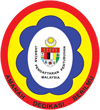The disease of leprosy had terrified mankind for thousands of years, and the victims were treated with utter contempt, literally as sub human beings, as outcasts from Society and driven away to live in isolation in deep jungles.
The history of leprosy in Malaysia goes back to over 300 years, and was probably brought in by the early immigrants.
Some of these early immigrants, terribly deformed by the diseases of leprosy, lived in the same villages and towns as the other inhabitants. The disease of leprosy was, in those early years considered as dangerous and contagious and could easily spread from one person to another.
FORCIBLE ISOLATION OF LEPERS
The Government therefore, at that early period, in order to protect the inhabitants from being infected by leprosy, enacted draconian laws to forcibly isolate those suffering from the disease of leprosy from the other inhabitants.
These unfortunate human beings treated more as sub-humans were forcibly isolated into very remote camps in the deep jungle in places such as Pulau Jerjajak (1871) Pulau Pangkor (1903), Tampoi , Pulau Seribun (1850) Setapak, Kota Baru, and the leper asylum in Circular Road, Kuala Lumpur (now Jalan Tun Abdul Razak).
SUNGEI BULOH LEPROSARIUM
Much later in the 1930s when the Sungei Buloh Leprosarium was built, leprosy patients from the various camps were brought into the Sungei Buloh leprosarium and the leper population at the time was around 3000 lepers.
However over the years, the number has reduced and by 1980 , there were 1473 patients and in 2010, there are only 239 patients and ex patients.
In the early stages, Sungei Buloh Leprosarium was surrounded by barbed wire fencing, to deter the lepers from escaping. The Government did its best to provide the lepers with whatever medicines were available including opium and with limited food and clothing. The lepers were helpless, physically suffering with little food and tattered clothes. They had nothing to look forward to, but just lingering death.
TAN SRI T H TAN, FOUNDER & FIRST PRESIDENT OF MaLRA
The late Senator Tan Sri T H Tan, one of the main members of the Hon. The Prime Minister Tuanku Abdul Rahman’s team in securing Independence for Malaya from the British in 1957, was at that time extremely involved in politics and other activities of National importance.
Busy as he was, Tan Sri T H Tan was so struck by the sufferings of these lepers, he decided that immediate help must be given to these poor suffering leprosy patients.
He therefore got together a handful of like mind personalities and founded the Malaysian Leprosy Relief Association (MaLRA) in 1959.
AIM OF MaLRA
The basic aim of MaLRA is to provide financial relief to the leprosy patients, ex patients and their families. To this aim, MalRA and all MaLRA Branches have been successfully assisting patients financially as well as with amenities.
Some of the amenities that both MaLRA HQ and all its MaLRA Branches provide to the MalRA patients are : wheelchairs, tongkats, walkers, artificial limbs, spectacles, sewing machines, cataract operation, house repair, bicycles, fishing nets, garden tools, school fees, books, uniforms, transport, bus fares, opening small business, cash relief and food parcels, rehabilitation services to patients which include social, medical, and vocational assistance.
TUN DATO’ SERI ABDUL HAMID OMAR, PAST PRESIDENT MaLRA
After the Presidency of MaLRA passed into the hands of Tun Abdul Hamid Omar, the former Lord President of the Malaysian Judiciary, it passed through a momentous period of growth expansion.
Tun Dato’ Seri Abdul Hamid Omar, whilst at the pinnacle of power and prestige as Lord President of the Supreme Court of Malaysia, was also moved by the plight of thousands of sufferers afflicted with the scourge of leprosy. His humanitarian instincts prompted him to find ways to alleviate the sufferings of these unfortunate people. Tun decided to go “hands on” to help these poor unfortunate people.
Firstly, the thrust was setting up Branches. MaLRA now has Branches in almost all the States including Sabah and Sarawak.
Secondly, as MaLRA relied purely on Government aid, the aim was to make MaLRA self –sufficient. Tun then made efforts to consolidate MalRA ‘s resources.
Thirdly, the most difficult of all was to coax the ex-patients to come out of their self imposed shyness and the feeling of being ostracized by Society. There had been a gradual improvement in this area. Through the efforts of MaLRA, these ex-patients have been taken to shopping complexes, on sightseeing tours, and even to five star hotels, where functions such as hamper distributions to patients are held during Hari Raya, Chinese New Year, Deepavali festivals.
Learn MoreMalaysia Leprosy Relief Association (MALRA)
| [email protected] Email | |
| malra.org.myWebsite | |
| +603-78036088Phone Number | |
| +603-78039488Fax Number | |
| Established since 1968Year of Establishment | |
| 002-10-24091968Registration Number | |
| Bangunan Tan Sri T H Tan D1-01, Jalan SS6/20A, Dataran Glomac Kelana Jaya, 47301, Petaling JayaAddress |

 Malaysia Leprosy Relief Association (MALRA)
Malaysia Leprosy Relief Association (MALRA) 
